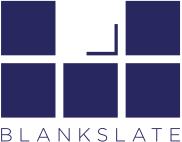Looking for more information on onboarding? Check out our series!
In the 60’s and 70’s being an air hostess was a coveted job. Air hostesses were glamorous, beautiful, and very often highly educated, speaking at least 2 languages. They were trained in every aspect of “hostessing” and every passenger’s journey began with a gracious, smiling “welcome on board.” So what does this experience have to do with your company’s onboarding experience?
In a similar way, onboarding a new team member is an important part of a new employee’s journey with your company. How these new passengers (employees) experience their take off, inflight service and landing needs to be seamless. So what can we learn from these educated, glamorous and perfectly refined air hostess of the past?
“WELCOME ABOARD.”
You’re plane is ready (company prepped), the pilots and cabin crew (leaders) are on board and the fuel tanks are full. (You’ve got budget and you’re hiring.) And of equal importance, you are well prepared to welcome your new passengers onboard.

“CABIN CREW PREPARE THE CABIN FOR TAKE OFF….”
You’ve interviewed, tested and reference checked your new employee and after careful consideration made them an offer. They’ve interviewed, tested, done their due diligence on your company and yes, they accepted!
Maybe this is your first hire or maybe it’s your 10th (or 100th), it actually doesn’t matter. But the experience that your new employee has joining your company does.
Each new employee is important, as each passenger that steps on the plane is unique. As your budget grew and you prepared to bring a new employee onboard, you no doubt gave some thought to the impact this one soul will make to everyone’s life at the company. You are now accountable for another human being.
“FLIGHT DECK TO TOWER; THERE ARE 10 SOULS ON BOARD.”
You are now mutually responsible for the success of this individual within your growing organization.
You know that in order to get this plane in the air, a lot of things have to happen before take off. The pilots are in the cockpit doing their pre-flight checks and the cabin crew are there to make sure the passengers’ journey and experience is as comfortable, safe and smooth as possible.
So as a leader, what do you need to consider before this new person starts? What’s on your employee pre-flight checklist?
“PLEASE ENSURE YOUR SEATS ARE IN THE UPRIGHT POSITION AND YOUR TABLES ARE SAFELY STOWED IN FRONT OF YOU.”
Safety first – getting organized and getting everything squared away is your responsibility. Knocking this role out the park is theirs.

THERE’S THE PASSENGER-FACING SIDE…
What does the passenger need to know to be safe? In turn, what does your new employee need to know before they start?
Set up communication with your new employee before they start. Send out as much of the paperwork as possible ahead of time, collect their signed contract, payroll and benefits information.
Think about what they need for the first day OR things that will set them up for success from the get go. Where to come day one. What time? Who to ask for. These small things make a difference and make them feel welcome.
Do you have a handbook? Culture slides? Getting them to your new team member before their first day sets them up to understand how you all work together.
Are there books that you recommend your people read? TED talks you’d like them to watch? Or even technical skills unique to your projects that you would like them to think about?
For the employee, none of this pre-work is mandatory, but it gives a great impression to the person joining that you (pardon my french) have your s$%t together.
What are the other little things you can do to make them feel welcome? Give them an outline and let them craft their own personal email introduction. Get it out to the rest of the team, with a great pic, a few days before your new employee starts.
…THEN THERE’S THE BIT THE PASSENGERS DON’T SEE
The cabin crew are stowing everything safely and getting the cabin ready for take off.
For your growing company, who is responsible for your new passengers? Do other members of the company know when they are joining and importantly, what their role will be?
Do you have a desk set up? Logins/access? Building access? What do you need to add them to your systems? This can take time when other departments are involved. Do you have systems? If this is your first hire, you might not, but let’s start thinking through what you need. Make sure they have a contact list with names and titles and that they are included on it!

Get creative – what else can you do so that this shiny new passenger joining your fight has a great first experience? A swag bag of branded goodies is a great first day welcome. Do you offer a Kindle, phone or other shiny new perks? Have them ready and waiting on the desk – it says so much about how much you have anticipated your new team member’s arrival and the value you place on them. Consider assigning a buddy, who will be their go-to for the first couple of weeks as they learn to navigate the new workplace.
Make sure you walk them around and introduce them to the entire team and point out the bathroom, the kitchen and other creature comforts. And schedule a welcome lunch Day 1 with the new hire and their direct manager. Have them spend some time getting to know each other as people.
“PLEASE FASTEN YOUR SEATBELT.”
Here’s where it starts to get interesting. Onboarding is meant to ease your new employee’s transition, but it’s about shared responsibility. The success of your new hire is as much your responsibility as it is theirs. When you fly, the crew aren’t asking you to fasten your seat belt for fun. They are doing it to make you safe. 80% of all accidents in the airline industry happen on landing and take-off. This is absolutely no different when hiring people. The success of your new hire and their direct impression of your company, can be directly impacted by the experience the employee has on take-off (onboarding) and landing (off-boarding).

What training and information will your new employee need to be successful? And how will they learn about your culture? How will you help them navigate? The founders have a great role to play here. Can you, as a founder, spend an hour with each new employee to share the story of your company, your passion for the product and vision for the future? How will that impact how they feel about you and your company?
Do they need training to understand the product? Your sales cycle? Your customer-centricity? Who will be responsible for sharing this knowledge? What are the operating norms they need to understand to be successful?
Are there established meetings they need to attend and who adds them? Are there regular or upcoming social events they should be invited to? Who are the key external contacts they need to meet – customers, clients, suppliers, vendors? Have you established a schedule and populated the new hire’s calendar? If not, you should.
“PLACE THE OXYGEN MASK OVER YOUR NOSE AND MOUTH AND BREATHE NORMALLY. ENSURE YOU FASTEN YOUR OWN OXYGEN MASK BEFORE ASSISTING OTHERS.”
Why do cabin crew ask this? Well it’s simple. If you need to look after yourself before you can successfully help others.
When you decided you needed to bring on a new person, you knew you had a gap to fill. You created a great role description and made an amazing hire, but now it’s time to get down to the nitty gritty of what you need them to do. Once you clearly understand what success will look like in their role, you can share those details and set them up to astound you. So spend some time thinking about the critical few (as well as the urgent many) that you need them to accomplish in their first 30, 60 and 90 days on the job. When you sit down with them to review how each of you has experienced their first 3, 6, 9 months, will you both be able to say you knew where you were going and what had to happen to get you there?
At BLANKSLATE we believe that your new employee ‘oxygen mask’ is your 30, 60, 90 day planned onboarding experience that closely aligns with your overall roadmap. Having a clearly defined destination and established, regular indicators of success along the way allows everyone to breathe normally.
But hey, you have a startup, there are always unexpected changes in cabin pressure to deal with. You might readjust, but not without letting everyone, including your new employee, know. The roadmap allows your new employee to readjust and continue to navigate the challenges in front of them.

WE HOPE YOU ENJOY YOUR FLIGHT.
So what do you need for an enjoyable flight? You need a fully fuelled and prepped plane. You need a trained crew and a solid pilot. You need a flight plan and and lots of resources in case of an emergency. And you need happy passengers.
To me, this doesn’t sound a whole lot different than what you need for a successful company. Be a leader, have a checklist and do your pre-work. Welcome people graciously and efficiently into your world. Define your goals and decide how you will measure success along the way. Create a detailed plan for the onboarding experience that clearly lets your new employee know how they can contribute to your success. With these basics in place, we believe you will have a smooth flight and be flying the friendly skies.
